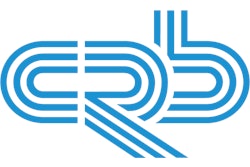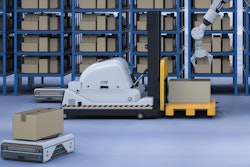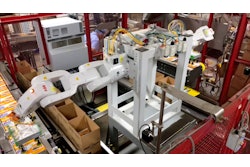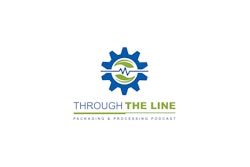While the latest PACK EXPO International in Chicago provided a great opportunity to run around and view so many of the packaging and processing industry’s latest innovation, it was also a chance to sit down and catch up with some of the thought leaders in our industry. One such conversation was with Jerry Steenhoeck, CRB’s senior director of automation technology.
Steenhoek had just recently been hired by CRB to bring his automation expertise to the design-build firm’s food and beverage group. He has almost 30 years of experience in automation and process system design, operations networks, and cybersecurity. As we talked about automation and how it applies to food and beverage manufacturing, Steenhoek noted that his worldview is shaped in large part by his time as chief technologist at system integrator Interstates Control Systems.
ProFood World: Comparing food and beverage to other industries, my impression has been that this industry is not exactly leading the automation charge. Has that changed in recent years?
Jerry Steenhoek: The reality today, with the workforce challenges, is that automation is no longer a nice to have; it’s a must have. One of the reasons why CRB has funded up is because our clients are asking us to better own the automation piece. There’s more demand now for automation in the food and beverage space because of resource constraints.
And everyone’s getting pushed for sustainability; everybody’s been getting pushed on Industry 4.0. Automation is the basis upon which all those things are on top of. It’s kind of hard to have a digital factory when you just have pushbuttons and manual labor. It’s hard to really make change with sustainability when you have no means of tracking or controlling processes to help with sustainability efforts. Automation is more and more of a push today because of those factors—the lack of labor and corporate drive for sustainability and Industry 4.0.
PFW: Automation is such a broad, overarching topic. How do you approach this with a customer? Where do you start?
Steenhoek: When we engage with a client, we like to create what we call a control philosophy. We talk to them upfront and ask, ‘What is it you want? And what is it you need?’ Because those are different. And then where would you like to get? And let’s design for both. On the plant floor today, you have to have networks because you’re moving data, you’re having to get things connected. That’s important and it’s cheaper to build that in early on in the process, especially on greenfields. But that control philosophy is really where we like to start with our clients. It’s sitting down with operations and sitting down with maintenance and sitting down with quality people and sitting down with all facets of the operation and getting their input and asking, ‘What are you looking to get out of your plant floor?’
And then you come back and you say, ‘Here’s the base automation.’ People talk about islands of automation—you can bring skids in and you can have everything kind of separate. Then you talk about integrating it all together, then you talk about the smart factory, then you talk about MES [manufacturing execution systems], then it ties into ERP [enterprise resource planning]. So it’s all layers and layers. But at the end of the day, automation is the basis on which everything is built.
PFW: We heard some talk during the COVID lockdown that more plants were getting their systems connected quickly and didn’t really have the time to do it right. Then later, they had to back up and make sure they were doing things more securely. What do you see happening in that area of network security?
Steenhoek: Cybersecurity is a huge deal on the plant floor, and it seems like some people are kind of—I’m going to cross my fingers, it’s not going to happen to me. And other people are being really proactive. I think you're seeing a lot of emerging technologies—a lot of startup companies trying to get a little different approach to cybersecurity on the plant floor. There are some software-defined networking companies out there that are looking to take that technology and apply it to the plant floor. There are companies out there trying to do more localized security—zones and conduits, if you will.
Typically, before, you had the firewall, and once you got by the firewall, the plant was available to everyone. Now there’s microsegmenting—putting firewalls that are underneath firewalls. Especially when you talk about having to give access to all the OEMs and skid manufacturers. And they want data going out as well. So now you’re punching holes in the firewall, not only coming in for remote access, but people are wanting data going out so they can do maintenance on their machines, so they can push that into the cloud for their clients to take a look at.
So part of your control philosophy is understanding what your network design and your security parameters are going to be on your plant floor as well. You have to have those skillsets. You have to be able to work with the IT group but also understand how to design your networks on the platform.
PFW: What’s your perspective on robotics? Where does it stand in the food and beverage industry?
Steenhoek: I do think robots are going to continue to move forward. The integration of vision and robotics is getting better and better—it’s amazing what a robot can see and figure out on the fly. With robotics, you’d always have a very rigid structure—that bag had to be here and it had to move here. And today, with vision integration, it allows robots to be smarter and do things more dynamically. So I think robotics are going to continue to grow, and I think automatic storage retrieval of materials with AVGs [automated guided vehicles], that is continuing to grow. The price point of that is still expensive, but as labor costs continue to go up, that’s getting closer.
We’re talking to our clients today, and they talk about their risk in the labor market. Their risk is material handling, and they’re looking to us to lead them into what technologies they’ll be looking at. Where can we look to alleviate risks in those areas?
I think robotics are going to continue to move forward. It’s amazing today what they can do compared to five years ago, and in five years, it’s going to be amazing what robotics are doing.
PFW: What other advice do you have as food and beverage manufacturers make their way through their automation journeys?
Steenhoek: Clients get themselves into trouble when they don’t think ahead. They just start going and then realize—oh, let’s piecemeal, let’s add that, let’s do this. And on the other side of things, clients can get in trouble with believing that if they just buy a big platform, it’s going to solve their problems. Sometimes you need to go find best in class to make this work vs. just buying and signing one deal.
























